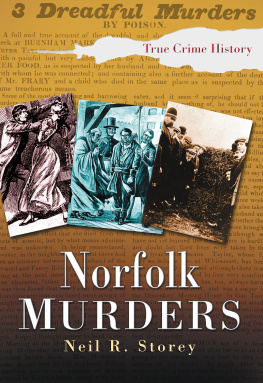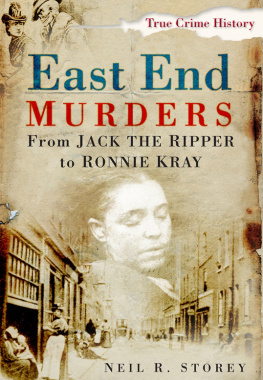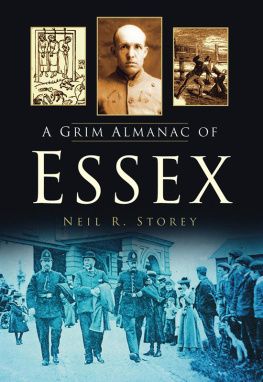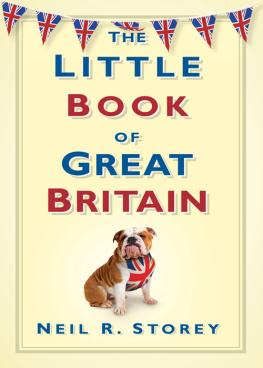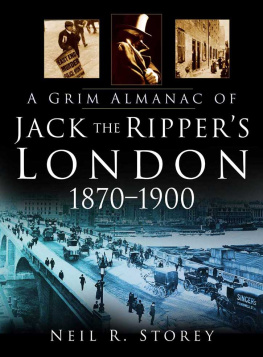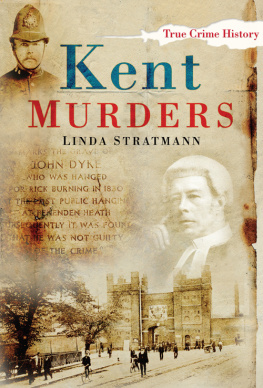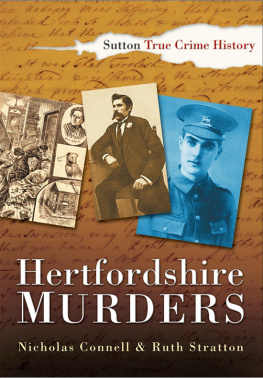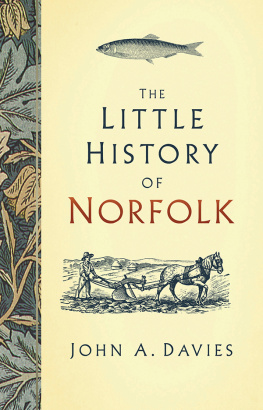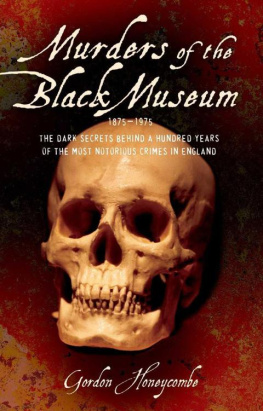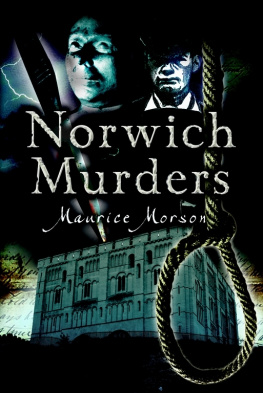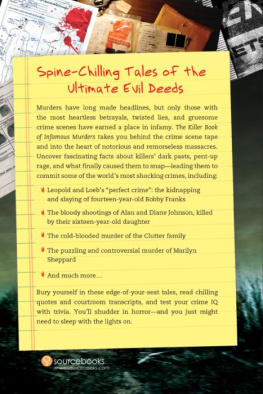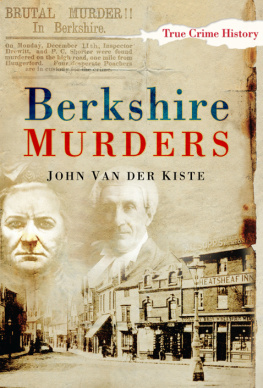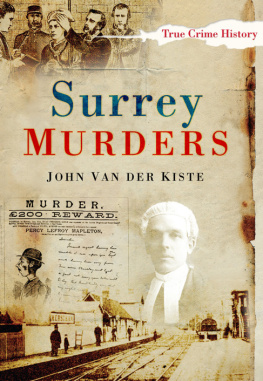Neil R. Storey - Norfolk Murders
Here you can read online Neil R. Storey - Norfolk Murders full text of the book (entire story) in english for free. Download pdf and epub, get meaning, cover and reviews about this ebook. year: 2006, publisher: The History Press, genre: Non-fiction. Description of the work, (preface) as well as reviews are available. Best literature library LitArk.com created for fans of good reading and offers a wide selection of genres:
Romance novel
Science fiction
Adventure
Detective
Science
History
Home and family
Prose
Art
Politics
Computer
Non-fiction
Religion
Business
Children
Humor
Choose a favorite category and find really read worthwhile books. Enjoy immersion in the world of imagination, feel the emotions of the characters or learn something new for yourself, make an fascinating discovery.
- Book:Norfolk Murders
- Author:
- Publisher:The History Press
- Genre:
- Year:2006
- Rating:3 / 5
- Favourites:Add to favourites
- Your mark:
- 60
- 1
- 2
- 3
- 4
- 5
Norfolk Murders: summary, description and annotation
We offer to read an annotation, description, summary or preface (depends on what the author of the book "Norfolk Murders" wrote himself). If you haven't found the necessary information about the book — write in the comments, we will try to find it.
Norfolk Murders — read online for free the complete book (whole text) full work
Below is the text of the book, divided by pages. System saving the place of the last page read, allows you to conveniently read the book "Norfolk Murders" online for free, without having to search again every time where you left off. Put a bookmark, and you can go to the page where you finished reading at any time.
Font size:
Interval:
Bookmark:
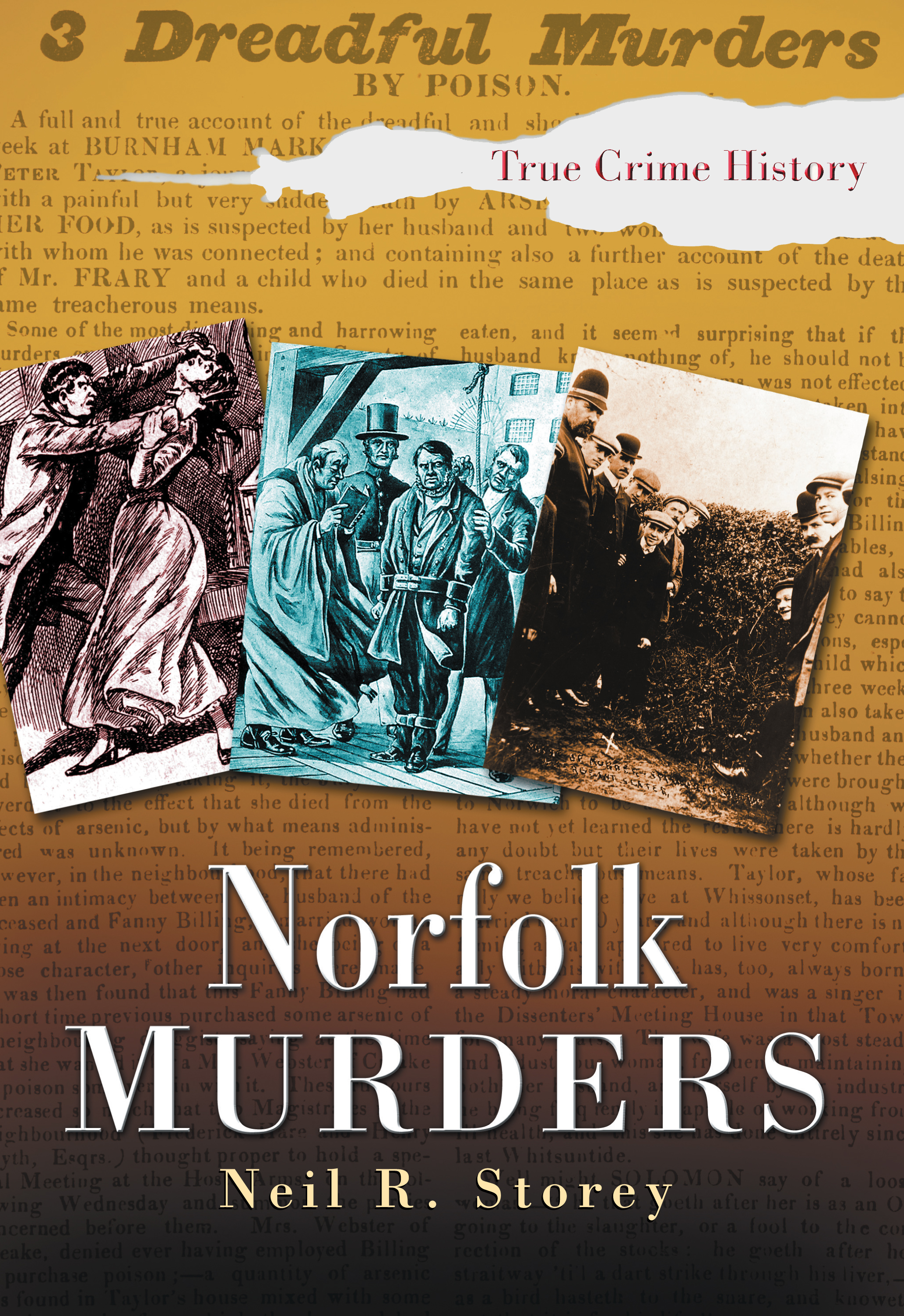
NEIL R. STOREY

First published in 2006 by Sutton Publishing
The History Press
The Mill, Brimscombe Port
Stroud, Gloucestershire, GL5 2QG
www.thehistorypress.co.uk
This ebook edition first published in 2012
All rights reserved
Neil R. Storey, 2006, 2012
The right of Neil R. Storey, to be identified as the Author of this work
has been asserted in accordance with the Copyrights, Designs and
Patents Act 1988.
This ebook is copyright material and must not be copied,
reproduced, transferred, distributed, leased, licensed or publicly
performed or used in any way except as specifically permitted
in writing by the publishers, as allowed under the terms and
conditions under which it was purchased or as strictly permitted by
applicable copyright law. Any unauthorised distribution or use of this
text may be a direct infringement of the authors and publishers rights,
and those responsible may be liable in law accordingly.
EPUB ISBN 978 0 7524 8427 3
MOBI ISBN 978 0 7524 8426 6
Original typesetting by The History Press
To ex-Chief Inspector Alan Chapman
of Norfolk Constabulary, a fine
copper and a good friend.

Burnham 1835
Wymondham 1848
Norwich 1851
Walsoken 1885
Great Yarmouth 1900 and 1912
Norwich 1903
Norwich 19056
Catton 1908
Gorleston 1909
Old Catton and Dereham 1951
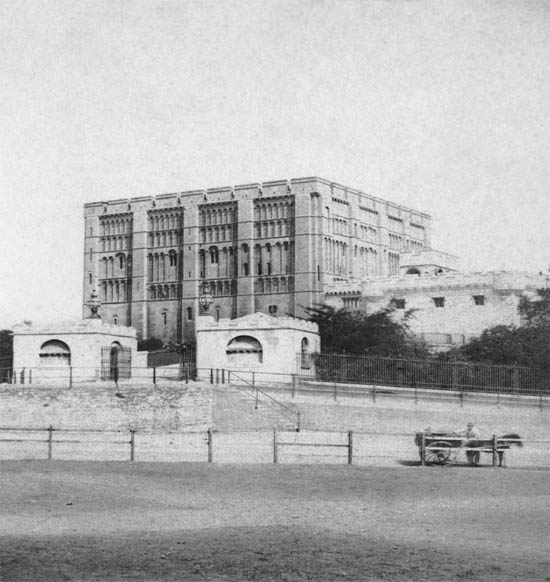
Norwich Castle, c. 1875. Hangings drew large crowds. On execution days the scaffold was usually erected between the gatehouses and the concourse over the cattle market.
I have been granted privileged access to numerous public and private archives and collections in the preparation of this book, and so to all too numerous to mention who have opened their doors to me, I say a genuine thank you. It has been proved, yet again, that when researching some of the darkest tales from Norfolks past, I have met and renewed the acquaintance of some of the nicest people.
I am also grateful for the kind and fascinating letters, compliments, and snippets of information, I have received from readers of my regular Grisly Tales features in the Norfolk Journal. Naturally, I wish to extend my thanks to all of them, but must find space to offer my gratitude to the following, without whose help, enthusiasm, generosity and knowledge, this book would not have been so enriched: my friend and esteemed fellow crime historian, Stewart Evans and his good lady Rosie; James Nice; Alan and Joan Chapman; Robert Bookman Wright; BBC Radio Norfolk; the late Syd Dernley; Jayne Whitwell; Brian Wild; John Forbes; Ken Jackson; Ray Noble; Peter Watson at Family Tree magazine; Clifford Elmer books; Les Bolland books; Philip Goodbody at Doormouse Bookshop; Brian Symonds at Burnham Market Pharmacy; Norfolk Probation Service; The Tolhouse Museum, Great Yarmouth; The Shirehall Museum and Bridewell at Walsingham; Wymondham Bridewell Museum; Norwich Castle Museum; Freda Wilkins-Jones and all the helpful staff at the Norfolk Record Office; University of East Anglia Library; the encyclopaedic knowledge of Michael Bean at Great Yarmouth library; Clive Wilkins-Jones and the superb staff at Norfolk Heritage Library; my friends amongst the past and present serving officers of Norfolk Constabulary; and of course, my old friends at the Norfolk Constabulary Archive.
Finally (but by no means least), I thank my family: especially my dear son Lawrence and my beloved Molly, for their love and support during the research of this book.
Note: all the photographs and illustrations are from the authors collection unless otherwise credited. All the modern photographs of murder sites, localities and gravestones have been specially taken by the author for this book in 2005 and 2006.
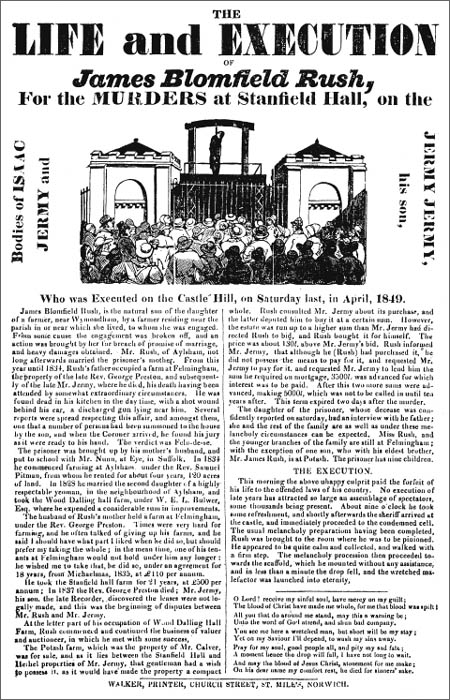
A broadsheet sold at the execution of James Rush, 21 April 1849.
N orfolk is one of Englands five largest counties. An extensive outland of agrarian fields stretching from the eastern flank of Britain, almost half of the county is bounded by sea. Over much of the period covered by this book, Norfolk was not overpopulated, and many towns and village communities were still, by todays standards, insular and remote. The industrial towns of the North and big smoke of London seemed a world away: their advanced transport systems, communications, density and diversity of human life sharply contrasting with the country ways of life. Back then, attitudes to life and death were very different. Families were larger, and it was a sad fact of life that due to epidemic diseases, bad sanitary provision and lack of affordable medical care, many did not make it to maturity. Widowhood and mourning black were the order of the day for numberless people for much of their lives.
Before the Temperance Movement took off in Norfolk, from about the 1880s, the local pub was the focal point of any village celebration, holiday or entertainment. Mind you, the path to temperance or blue ribboning was not a smooth one: both men and women of the rough order took exception to what they considered meddlesome interference by organisations like the Salvation Army (or as they called them, The Skeleton Army), pelting them with whatever came to hand in the gutter as they paraded. Hence, the early bonnets worn by female Salvationists were more for protection than uniform appearance! In those days, men spent most of their spare time in pubs, perhaps taking part in pub sporting events such as skittles or quoits: but it still meant they were drinking. Indeed, a recurring theme in a number of Norfolk murder cases is the fact that the culprit was known to have been in drink, or even a habitual drunkard whose mind had become unhinged by alcohol abuse.
For most Norfolk people in the nineteenth and early twentieth centuries news was disseminated by word of mouth, newspapers and periodicals. In many areas country folk would eagerly await the arrival of the town and village carriers, bringing the latest news from the big towns and the city. As ever, a local murder always attracted a premium of interest: from the horror of its discovery, through the tracking of the murderer, and on to the trial people often forming their own opinions for or against the accused. If the case had gained some notoriety the papers would be filled with columns detailing every aspect of the case, and many would eagerly watch for the jurys verdict: for if it was Guilty they could be in for what they considered a treat! Before the public execution of felons was banned by parliament in 1868 and removed out of sight behind prison walls in the days before professional football matches, film shows and television a hanging was a real event. Thousands of men, women and children numbers equalling that of football match capacity crowds would fill the open ground and cram into the windows of nearby houses to watch the proceedings. Many would have set out in the wee hours of the morning, walking miles to guarantee themselves a good view of the execution.
Font size:
Interval:
Bookmark:
Similar books «Norfolk Murders»
Look at similar books to Norfolk Murders. We have selected literature similar in name and meaning in the hope of providing readers with more options to find new, interesting, not yet read works.
Discussion, reviews of the book Norfolk Murders and just readers' own opinions. Leave your comments, write what you think about the work, its meaning or the main characters. Specify what exactly you liked and what you didn't like, and why you think so.

